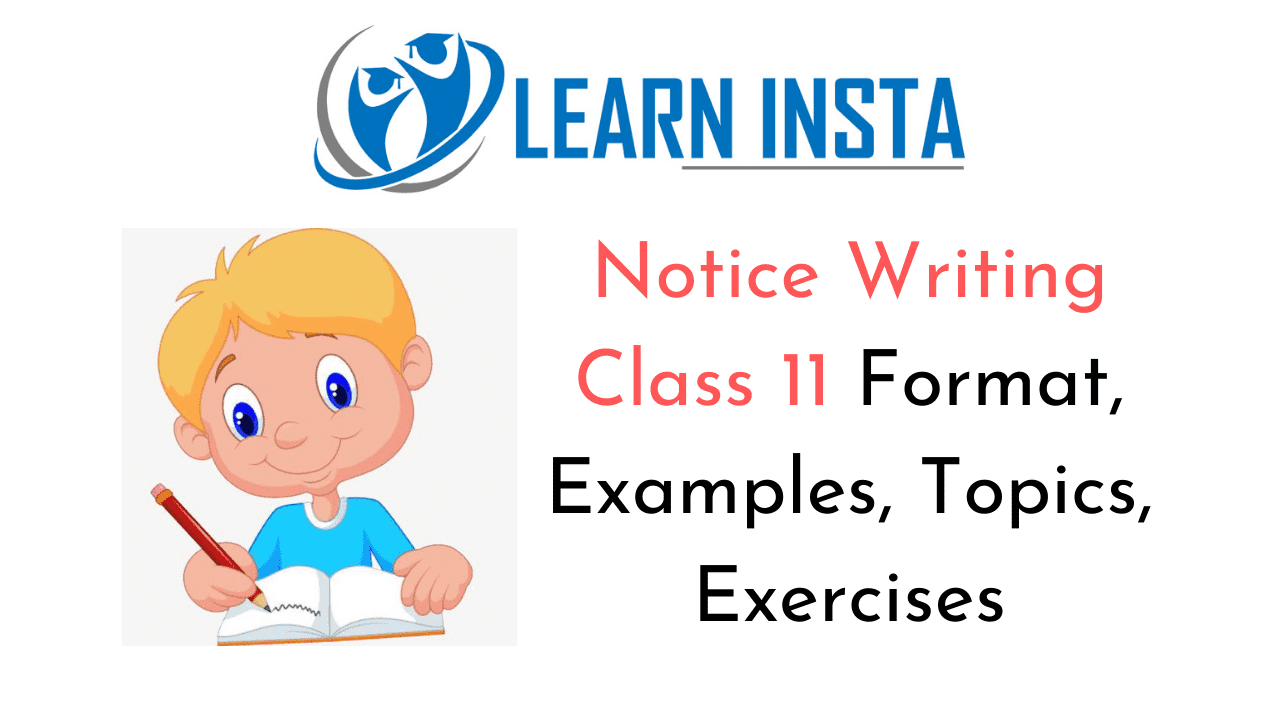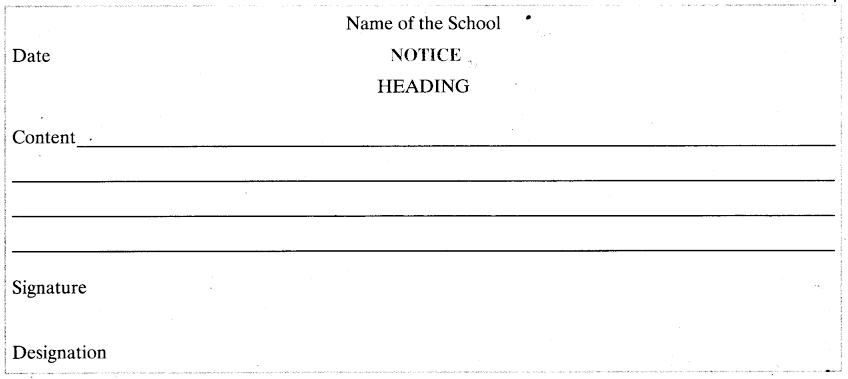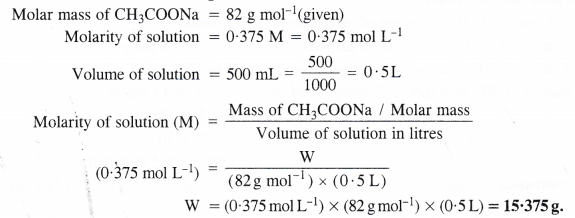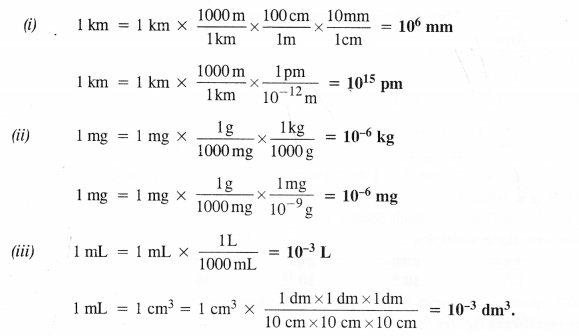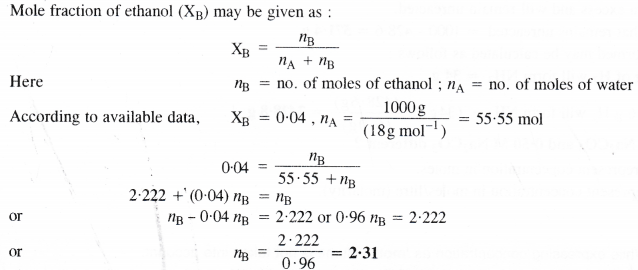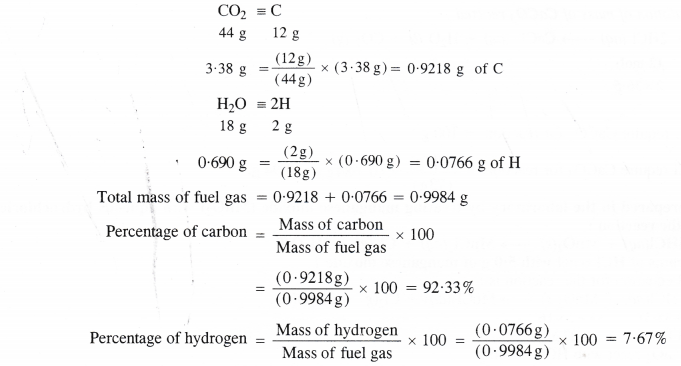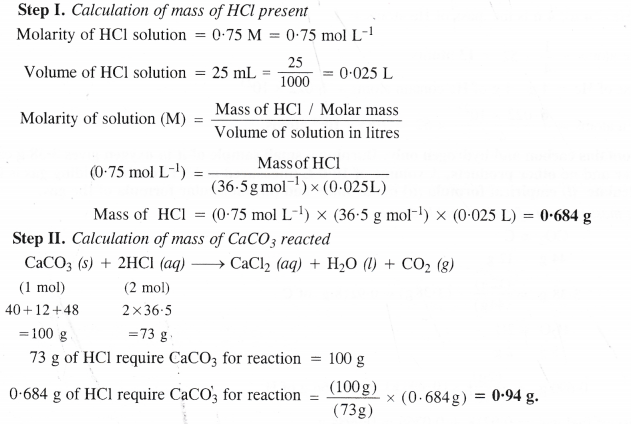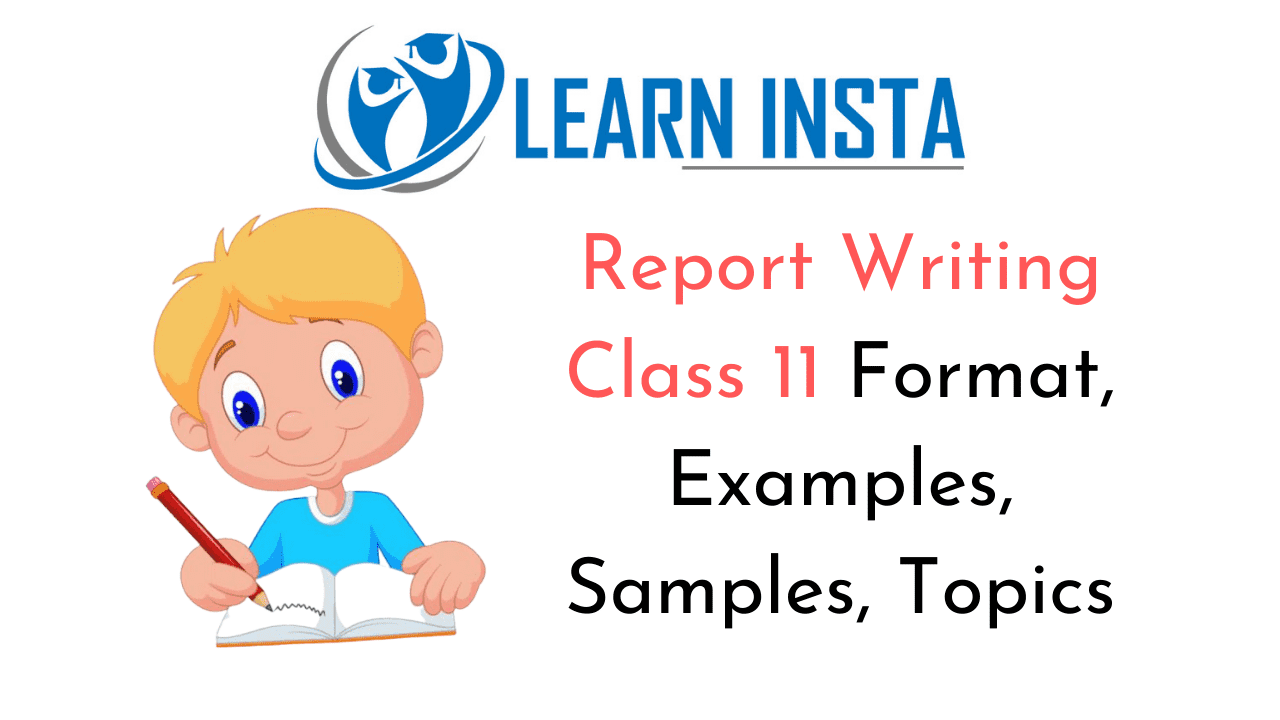
A report is an official/semiofficial piece of writing which involves giving information about an occurrence, an event or an investigation. By its nature, a report has to be
- Factual
- Concise
- Objective, and
- Free from any bias
Report Writing Format, Examples, Samples
The writer of the report must state only the happenings and occurrences in sequential order. He/She does not have the freedom to express his/her opinions or conclusions. Similarly, elaborations, descriptions, and irrelevant matter cannot be included.
This grammar section explains English Grammar in a clear and simple way. There are example sentences to show how the language is used. Students can also read NCERT Solutions for Class 11 English to get good marks in CBSE Board Exams.
Report Writing Class 11 Format, Examples, Samples, Topics
A newspaper report must be comprehensive but brief; factual yet interesting.
Hence factual reporting is an actual coverage of an event. It is a brief review of a situation or a process that includes only the relevant points and information. It is usually written in the third person and in indirect speech. The passive voice is used. The language used is neutral and figurative. Ornamental language is avoided. The content should include when, where, why and how of the topic to be written about.
A newspaper report has all the following qualities:
- It has to have an appropriate language.
- Since the events being reported are in the recent past, the past indefinite, past continuous, and past perfect tenses are used.
- The language used is formal.
The passive voice is preferred.
‘Journalese’ or journalistic vocabulary is used:
(a) “according to sources”/according to a spokesman”;
(b) Words like ‘murderer’, ‘smuggler’, etc. are preceded by “suspected/alleged’.
- There should be a logical development of ideas, i.e., causes/reasons, effects, or consequences.
- It should be comprehensive and reflect the opinions of people. It should contain views of all the sides involved.
- Personal pronouns are to be avoided.
The report for a school magazine follows the same format as a newspaper report but the language is semi-formal. The writer’s name and class are mentioned just below the heading/title of the report.
Points to remember (for news report)
- A news report should have a headline, date, and place of origin of the news.
- It should carry the byline/name of the reporter.
- It should contain only relevant information.
Points to remember (for first-person accounts)
- Describe the incident objectively.
- The description must be logical and in sequence.
Points to remember (for factual description)
- Be objective.
- The presentation should be logical and systematic.
Points to remember (for a factual description of the process)
- Give a step–by–step account of the activity, experiment, and procedure. It is essential to provide a heading and promoting the reporter’s name is essential.
Headline
Every news article has a headline to attract the attention of the reader. The headline must state the topic of the news in a strong, short phrase or statement.
A headline must be:
- catchy
- brief – leave out articles, prepositions, etc. where possible and use abbreviations/shortened word – forms.
Byline
Since this is your report, you need to let the reader know who wrote it. The line with your name on it is called the “byline” because it tells by whom the article is written. Write the word “by” followed by your first and last name. On the next line, write the name of your school and city.
Lead paragraph
A lead paragraph usually answers the questions: Who, What, Where, When, Why.
Remember to write about these in your lead paragraph:
- name or names of the person or thing this news is about
- the place where this incident happened
- the day, date, and time of the day when it happened.
- details of the incident
- reasons why the incident happened
Paragraph 2
Eyewitness accounts add to the authenticity of the news. Also, they may interest the reader. Include some quotes from the eyewitnesses’ comments. Also, describe what they felt about the incident.
Paragraph 3
Describe the future course of action is planned.
Note: Remember to use simple, clear but formal language.
Include the following details in your report:
Event/Function
- Factual details:
- name/nature of the event
- occasion
- organisers
- date, time, venue
- sequence/details of the event
- the detail is about Chief Guest/judges/participants
- highlights of the event:
- Chief Guest’s message
- vote of thanks
- conclusion of the event
- comment(s) on the quality of the program
|
Accidents
- what happened
- where, when, how
- people/vehicles involved
- loss of life and property
- details of rescue and relief operations
- the accident scene
- details of casualties—dead, injured, hospitalised
- inquiry ordered (if required)
- grants to victims’ kin/injured (if required)
- comment by a reporter on similar tragedies/accidents
|
Reporting incidents and occasions for Magazine/Newsletter
♦ Reports: School Magazine:
Question 1.
Your school invited the parents of Kalpana Chawla to be the chief guests at a special function organised to pay tribute to the Indian woman astronaut. As the Activities Editor of your school magazine, write a report in 150-200 words on the event. You are Rishiraj/Rajshri Verma. (10 marks)
Answer:
1. Remembering Kalpana Chawla
2. Our school organised a function on 5th April, 20XX to pay tribute to India’s great space traveller Kalpana Chawla who became a martyr to the cause of space research.
3. Kalpana Chawla’s parents, Mrs & Mr. Chawla were the chief guests. The function began sharply at 9.00 a.m. when Mr. Chawla tearfully garlanded the portrait of his illustrious daughter. Solemn devotional songs were sung. The highlight of the programme was Mr. Chawla’s speech in which he narrated the incidents of Kalpana’s childhood and years in Punjab Engineering College. The Principal declared that our newly constructed library would be named after her. At the end of the programme, an open session was held where the students could interact with the proud parents of Kalpna Chawla.
4. It was an inspiring as well as a touching event. The programme concluded with a vote of thanks by our Vice-Principal.
5. Rishiraj Verma XIB
♦ Analysis:
1. Heading: This summarises the main event-paying tribute to Kalpana Chawla-which is the subject of this report. The heading should be underlined. Every word should begin with a capital letter.
2. The first paragraph is introductory. It gives factual information about the event what it was and when it was organised.
3. The second paragraph gives details of the event. It tells us about the
- Chief guest
- Sequence of happenings, and
- Main Highlights
4. The third paragraph gives the conclusion.
5. The writer’s name, class, and section are stated at the end of the report. These can be written immediately below the heading too.
6. Notice that no irrelevant information is given.
7. The language throughout is simple, direct, and formal. No figures of speech or ornamentation of language is used.
Question 2.
You are Samidha/ Ajay of Jan Kalyan School Delhi. Your school organised an inter-school debate competition last month. Write a report of this event in 150-200 words for your school magazine giving details like schedule, venue, topic, winners etc. [NCT 2018]
Answer:
Inter-School Debate
Our school, Jan Kalyan School, was the venue for an interschool debate. It was a very successful event due to the enthusiastic participation schools.
The topic chosen was interesting, ‘Nothing is Permanent Except Change’. The judges have known personalities from education, media, and journalism. The debate started sharp at 9 am in the school auditorium. Intelligent and lively expression of points and counterpoints by the speakers charged the atmosphere. There was rebuttal from the audience to test the speakers further. The judges had a tough job picking up the best from the best. The announcement of results brought great cheers and some disappointments.
After the debate the guests were served refreshments. Thus our annual event came to a happy end.
Samidha
11A
Question 3.
Write a report to be published in your school magazine, describing how the Annual Day, was celebrated in your school this year. You are Puneet/Puneeta of XI E. [150-200 words] [NCT 2017]
Answer:
Annual Day Celebrations
Annual Day of our school is something to be seen and experienced. Parents and students await the day eagerly and teachers and students work tirelessly to make the day a success. The Annual Day of 20XX proved itself worth the labour in abundant measure.
The Annual Day was planned meticulously. The Primary section presented Art and Science Exhibitions throughout the day for parents. Junior School had their Sports Day in the afternoon from 3 pm to 5 pm. Senior school presented a two-hour long dance drama. Meera Bai in the school auditorium from 7 pm to 8 pm. Some parents had children in all three sections, most had in two. The Director of the Primary Department, the Head Master of junior school and the principle of senior school looked after their Chief Guests respectively. Many guests and parents congratulated the children, teachers and the management on their performances and arrangements.
Ketan Khare
11E
Question 4.
You are Mohit/Mamta, the Secretary of Eco Club of your school. Recently you celebrated “Tree Plantation Week”. Write a report for your school magazine in 150-200 words. [NCT 2015]
Answer:
Tree Plantation Week
We celebrated ‘Tree Plantation Week’ on 27 July 20XX. The members of the ‘Eco Club’ were congratulated profusely. I, as the president of the club, was satisfied that my efforts had borne fruit. We had planned to involve all the students of classes 5 to 12 in some way or the other. Each class was asked to do some research and choose a plant. Each class was allotted a patch of land in the school garden which they had to prepare according to the needs of their chosen plant.
On 27 July, our chief guest Ms. Kiran Bedi arrived promptly at 9 a.m. She was received by members of the Eco Club and welcomed by our Principal. She spoke briefly and encouragingly to the students about the importance of trees. She was then led to plant a ‘neem’ sapling.
While the chief guest was served refreshments, students of classes 5 to 12 planted their saplings. The chief guest, our Principal and the students were very pleased with the programme.
Mohit
Question 5.
The ‘Environment Club’ of your school organised a cleanliness drive to keep the school campus and the locality clean. The students cleaned the classrooms, corridors, playground,s etc. and also organised a rally to create awareness among the masses about the importance of cleanliness. Write a report to be published in the school magazine about the drive-in 150-200 words describing the efforts made by the students to make it a success. You are Anjani/Ankita of Class XI, Ajanta Public School, Delhi.
Answer:
Cleanliness Drive
As part of the Gandhi Jayanti, the Environment Club organised a cleanliness drive from 1st to 7th October. The drive encompassed the school and the neighbouring locality. Students were given incentives to keep their classes clean. A panel of judges picked up the five cleanest classes and awarded them prizes. Groups of students, by rotation, kept the area near the canteen litter free and the playgrounds clean.
The-high point the drive was our work in our locality. We organised a rally which was addressed by the President and Vice President of the Club. Groups of students went out to clean the neighbourhood.
‘The Environment Club of our school is doing commendable work. The President, Anupam Verma is extremely enthusiastic about environmental projects.’
The Environment Club conveyed its message both by word and deed.
Anjani
XIA
Question 6.
As the student leader of your school, you have been given the responsibility of organising a “poster making competition” on the occasion of Independence Day. Write a report in 150-200 words describing how you plan to go about it. You are Raman Gill of Adarsh Vidhya Mandir, Karnal. You may use the following suggestions:
| Notice on a noticeboard – participants – announce topic – give rules – painting material – appoint judges – select venue – describe the event – results – prize distribution by Chief Guest. |
Answer:
Poster Making Competition
I had to organise a poster making competition for the Independence Day celebration next week. I put up a notice announcing the event and inviting participation from the students of classes IX and XI. The response was quite good. Twenty students from class IX and twenty from class XI were found eligible by our teachers.
The competition was held on 12th August. The students were given three topics and had to prepare a poster on one of them. Paper was provided but the students had to bring their own painting material. Three judges were to pick the winners. The venue was the Artroom. Students were given one hour for the poster which had to have one picture in four colours and a text in 50 words.
The students produced excellent work. The judges picked up the three best entries. The Chief Guest gave away the prizes to the winners.
Raman Gill
XIA
Question 7.
Your school organised a seminar on ‘Climate Change and its Impact on India’. Eminent speakers were invited to deliver lectures on far-reaching and disastrous consequences of greenhouse gases, increased carbon dioxide emissions, ozone depletion and Arctic ice melting. There was also a question and answer session. Write a report on the event for your school magazine. You are Roshni/ Ravi of Deep Public School. (150-200 words)
Answer:
Climate Change and its Impact in India
On July 20th, 20XX, our school organized a seminar for the students of classes IX to XII. Our Principal had invited an eminent scientist and an environmentalist to create awareness of the crucial issue of ‘Climate Change and its Impact in India’ among students.
The programme started at 9.30 a.m. sharp. The scientist, Dr R. Narain, and the environmentalist, Dr Neeraj Ravi, were welcomed by the Head Boy. After the welcome speeches, Dr N. Ravi gave a power-point presentation on climate change, global warming, melting of glaciers and rising of sea level. Many of us did not know that CFC gas found in aerosol sprays was that deadly. This was followed by questions and answers on greenhouse gases, C02 emissions, ozone depletion and the melting of polar ice caps.
It was an extremely useful seminar for which we are thankful to our Principal.
Roshni
XIC
Question 8.
Recently, a cultural programme was arranged by your school with the help of the local artists of the city for raising funds to help an association with handicapped children in your city. Write a factual description in 150-200 words for publication in the newsletter of your school.
Answer:
Fund Raising Programme
25th January was a memorable day for our school and the neighbourhood. On the eve of the Republic Day, we hosted a cultural programme for helping ‘Samartha’, an organization that works for the handicapped children of the financially weaker sections in our neighbourhood.
We engaged local musicians, singers and bandleaders to present a variety programme. The best singers and dancers of our school also prepared some items. We launched a massive publicity campaign with posters and visits to local colonies.
Finally, on the evening of 25th January at 5 p.m., the programme began. The Education Minister was the chief guest. We presented a cheque for ₹ 2 lakh and two wheelchairs to ‘Samartha’. We hope Our endeavor will brighten the lives of some challenged persons.
Rohini
XI C
Question 9.
On the occasion of the inaugural function of the 17th New Delhi Book Fair, your school was invited to participate in the Book March from India Gate to Pragati Maidan. Write a report in 150-200 words for publication in your school magazine about the March describing the participation of several schools. You are Shikha/Shikhar of class XI.
Answer:
The Book of March
Our school was invited to participate in the Book March on 4th February from India Gate to Pragati- Maidan on the inauguration of the 17th New Delhi Book Fair.
This was a unique way of spreading love for reading among people. We prepared banners and placards with messages like ‘Books Give Knowledge, ‘Books Give Pleasure’ and ‘Books Are Our Best Friends’.
About fifty students were chosen from our school. We reached India Gate at 8:30 a.m. and were asked to lead the march. About twenty schools participated. At the end of the march, at Gate No. 2 of Pragati Maidan, we were given refreshments. Many people stopped to watch us and read our banners, so I think we achieved our purpose.
Shikha
XIA
Question 10.
You are Sahil/Shruti of Government Senior Secondary School, New Delhi. Recently you got training in ‘FIRST AID’ by a local branch of the ‘International FIRST-AID Organisation’ as part of the Universal Health Programme. Eminent doctors from the prestigious hospitals provided practical training to Class XI students. Free ‘FIRST AID KIT’ was also given to your school. Write a report in 150-200 words for your school magazine on the training received by you.
Answer:
Training in First Aid
The students of Class XI, Government Senior Secondary School, New Delhi received training in first aid. The programme was organised by the local branch of the International First Aid Organisation, under the Universal Health Programme.
The training programme was held in Ram Manohar Lohia Hospital from May 20 to 26. In the week-long training, we were given instructions in hygiene and patient care. Elementary skills of administering injections, measuring temperature and blood pressure were taught. In the last two days, we were taken to the children’s ward and given practical training to bandage the arms and the legs of babies.
In the end, each one of us was given a first aid kit free of charge. It was a useful and enjoyable experience.
Sahil
XID
Question 11.
Labour Day was celebrated in a unique way in your school. All workers who help in the running of the school like peons, gardeners and security guards and those who help to keep the campus clean, were honoured in the morning assembly. The Principal spoke about the dignity of labour. Children presented items reflecting similar sentiments. At the end of the programme, each one of the guests was given a gift. Write a report on this special assembly for your school magazine in 150-200 words. You are Cherie/Chetan of XIC.
Answer:
Labour Day Celebrations
Very few schools have May 1 on their calendar for celebration. Our school is unique in this respect for we celebrate May 1, Labour Day, with great fervour.
This year, the celebrations were on the theme “The Dignity of Labour”. All the workers like the peons, gardeners, security guards, etc. were honoured in the morning assembly. The master of ceremonies invited each one by name to come and take his place on the stage. The Prefects presented bouquets to each one of them. This was followed by a song, a group dance and a short skit reflecting the importance of manual labour.
The Principal then gave an inspiring speech on the work done by them. He presented an umbrella to each one of the workers. They were visibly moved. The seniormost peon offered thanks to the Principal and the staff.
The assembly had a great impact on the students. They understood the valuable contribution made by the workers.
Cherie
XIC
Question 12.
The Golden Jubilee celebration of your school has just ended. It was a year-long programme featuring an Interschool debating contest, a play festival, a fun fair, an exhibition, special programmes for ex-students and parents and concluded with a grand cultural programme. As Mayank/Maya Jain of XI-C, write a report in 150-200 words for publication in your school magazine.
Answer:
Golden Jubilee Celebration
Our school completed fifty years of its existence on 1st Jan. 20XX. Year-long celebrations were planned-Organising a committee made up of Principal-Some staff members and the students’ council. School activities-Exhibitions of art and craft, and science-Fancy-dress and dance competition for a primary sections-A special issue of the school magazine. Inter-school debate contest, a play festival-
Special programmes for ex-students-concluding function-a highly appreciated dance-drama ‘Meera’.
(Develop these hints into complete sentences.)
Mayank Jain
XIC
Question 13.
Amrapali Saran is the Secretary of the Cultural Society of ABC School, Janakpuri. Vanamahotsava was Celebrated in her school on 24 August. She is asked to write a report of the programme. Write this report in 150-200 words, with all the necessary details about the programme, participants, cleanliness, tree plantation, dances, etc.
Answer:
Vanamahotsava
Vanamahotsava was celebrated in our school on 24 August 20XX. The Principal had arranged for four saplings to be planted on that day in our school garden.
In the morning assembly, there was a speech by the Head Girl on the importance of trees in our life. Immediately after the assembly, the four saplings were planted by our guests-army officers who . had fought the Kargil war. The best part of the celebration was that every child was a participant in some way or the other. Many had made posters, some had joined the cleanliness drive while some ‘ others performed dances.
It was a very successful programme. All the children learnt about the importance of trees.
Amrapali Saran
XIA
Question 14.
Pooja is the Secretary of the Cultural Club of ABC School, Sarojini Nagar. She is asked to write a report on the Children’s Day celebrations in her school for the school magazine. Write a report in 150-200 words with all the necessary details about the programme, chief guest, and participants.
Answer:
Children’s Day Celebration
Children’s Day, 14 November 20XX, was celebrated with great fervour in our school. The day began with a special assembly to honour ‘Chacha Nehru’ in whose memory the day is celebrated. There were songs and speeches and poems expressing the great love Nehruji had for the children.
The special feature of the day’s celebration was the presence of about fifty children from a nearby’ slum. They were gifted books and clothes. Some games had been organised for them. We were amazed to hear of their hopes and aspirations. They were all eager to pursue studies. Many of us resolved to make at least one under priviledged child literate. The children were given a box of sweets each at the end of the programme. Their happy smiles made our day.
Pooja
XIC
Question 15.
To commemorate ‘Conservation Day’ and to sensitise students to global issues, HT PACE hosted the annual on-the-spot inter-school essay writing competition at Sanskriti School, Chanakyapuri, New Delhi. As the Secretary of the English Literary Society, write a factual description of the event in 150-200 words for publication in the school newsletter.
Answer:
Conservation Day
HT PACE organized the annual On the Spot Interschool Essay Writing Competition at Sanskriti School, Chanakyapuri, New Delhi last Saturday, which was ‘Conservation Day’. The purpose was to sensitise students to the global issue of conservation of our flora and fauna – our environment. There were participants from about 20 schools. The contest began at 8.30 a.m.
The participants were led to a hall and were given roll numbers and sheets for writing. The topic was “Conservation is Our Sacred Duty’. Some pictures were also displayed to give the participants some idea of the subject. At the end of 30 minutes, the answer sheets were collected.
Later in the school hall, the chief guests, Mr. R.N. Verma, the noted conservationist, spoke to all the participants.
The result was declared 10 days after the event. The prize-winning school was awarded a trip to ‘Sariska Tiger Reserve’. Five individual prizes were given.
Ambica
XIC
♦ Reports for Newspapers:
Question 1.
Recently Metro Rail was inaugurated in Delhi by the Prime Minister. You, Rajat/Rajni were an eyewitness to the inauguration ceremony of “Metro Rail – A Dream Come True.” Write a report for publication in a newspaper in 150-200 words about the event.
Answer:
1. Metro Rail – A Dream Come True
2. by Rajat Khare
3. 25th Dec., 20XX, Delhi
4. On 24th Dec. 20XX, Delhi took a giant step towards becoming a modern city, with the inauguration of Metro Rail by the Prime Minister, Shri Atal Bihari Vajpayee. Being an employee of the Metro Rail, I was able to witness the grand event.
5. Tis Hazari station had been decorated beautifully. Only VIPs were to travel on the inaugural –
run of 7 km between Tis Hazari and Shahdara. The Prime Minister arrived on time. The Metro train, brand new and shiny, looked festive with floral decoration.
6. The engine driver Mr. XYZ wore a grey-suit and was fully aware of the honour of driving the city’s first Metro train. A huge crowd had gathered to witness the event.
At 11 a.m. sharp, the train was signalled off. The glistening Metro train set out on its smooth journey, much to the pride and happiness of the builders of the system and the citizens of Delhi.
♦ Analysis:
- HeadLine: Informative and interesting
- Byline: gives the writer’s name.
- Dateline: gives the place of occurrence and the date of receiving the report.
- Paragraph 1 states the main event which is reported. It gives information about
- The date
- The event
- The celebrity was at the centre of the event.
- Paragraph 2 elaborates on the event and gives factual information about it.
- The venue
- The guests
- The driver of metro train who was an important person that day
- The concluding paragraph rounds up the event at a high point – the setting out of the Metro A train.
Question 2.
Recently, the protests of the property owners against the demolition drive by the MCD in Delhi brought the normal life of the city to a standstill. Rioting, stoning, and attack on government property were witnessed all over the city. As Nirman/Nimanshi, write a report for publication in a newspaper in 150-200 words.
Answer:
Demolition Drive Continues
by Nirtnan
New Delhi, 14th April: The MCD continued the demolition drive on the third day today in the Rohini area of north-west Delhi. Bulldozers were at work demolishing the commercial establishments in Sector 8 of Rohini at 10 a.m.
Following the orders of the High Court, the MCD pulled down elegant sarees and furniture shops in sector 8. The police force was present in considerable numbers to assist the MCD authorities. The traders, however, were angry and expressed their rage by coming out on the streets along with women and children. They threw stones at the bulldozers and drills and shouted slogans against the MCD and the Chief Minister.
The demolition drive is expected to continue for some more days.
Question 3.
‘Traffic week’ is being celebrated in your city. Within the first two days, the police have booked over three hundred violations. Lane breaking, jumping red light and speed violations top the list. Underage drivers are the main culprits. As Subhash/Shalini Shourie, write a report in 150-200 words for publication in a newspaper.
Answer:
Traffic Week
by Subhash Shourie
New Delhi, 13th Sept., The ‘Traffic Week’ currently being celebrated by Delhi Police promises to be effective in controlling the traffic woes of the city.
In the first two days, over three hundred violations have been registered for various offences. Maximum offences were of lane jumping. These violations were detected using special devices with the electronic eye fitted at strategic locations. Jumping red-lights and breaking speed limits are next in frequency. These violations cause accidents to pedestrians. High on the list of offences is rash driving by underaged drivers behind the wheels without driving license.
The police authorities are encouraged by the success of the first two days.
Question 4.
A schoolboy of fifteen displayed remarkable nobility and heroism in rescuing men, women and children trapped in an overturned bus. After rescuing them, he arranged conveyance for them to be taken to nearby hospitals. As Nikhil/Neelam Gupta, write a report for publication in a newspaper in 150-200 words.
Answer:
School Boy Saves Lives
by Nikhil Gupta
Lucknow, 7th of April. Fifteen-year-old Aakash saved two lives. He rescued people trapped in an overturned bus.
8 p.m. Aakash returning from tuition-came to a lonely dark spot-heard cries-found bus on its side-probably skidded-Passengers trapped-some came out of windows and were pulling out people. Aakash climbed in from the driver’s seat-carried a small child out-gave artificial respiration-brought out an old lady, a heart patient-stopped a passing auto-rickshaw and took them to the hospital. (Develop these hints into complete sentences.)
Question 5.
You are a press reporter. Recently, the Railways cancelled a few trains due to floods. Passengers were stranded at the New Delhi Railway Station. Write a report in 150-200 words highlighting the problems faced by the passengers.
Answer:
Mumbai Trains Cancelled
by Aradhana Verma
New Delhi, 27th Aug. All trains on Delhi-Baroda-Mumbai routes have been cancelled due to flash floods in Gujarat. Some trains have been diverted. Railway officials had no idea when the trains via Baroda will be resumed.
Flash floods hitting Gujarat region have covered the railway tracks with two feet of water at certain places. A span of 100 metres of railway track has been washed away, resulting in the cancellation of Rajdhani, Paschim Express and some other trains on this route.
New Delhi Station is crowded with stranded passengers. They have no choice but to wait for the resumption of train services. Food, water and toilet facilities at the station are inadequate.
Question 6.
You participated in the Republic Day celebrations on 26 January 20XX at the Parade Ground, Sector 17, Chandigarh. Describe the event in 150-200 words mentioning the following points:
| – date – time – venue – people who gathered – chief guest – events – honours given – National Anthem. |
Answer:
Republic Day Celebrations
by XYZ (XIA)
Chandigarh, 27th January 20XX Republic Day was celebrated in great style yesterday. The main function was held at the Parade Ground.
The parade was inspected by the Governor of Punjab, Mr X.Y.Z. At 7.30 a.m. The National Flag was unfurled with the singing of the National Anthem. Twenty one guns boomed in salute. The Governor took the salute of battalions of the police force. After the march-past, gallantry awards were given to the police personnel for outstanding acts of bravery. People’s hearts were touched when the twelve-year-old son of a deceased policeman received the posthumous award.
The crowd was cheerful and full of patriotic fervour.
Question 7.
You are a press reporter. You have interviewed different passengers of a hijacked plane to know their experiences. Sum up their experiences in 150-200 words as a report for a newspaper.
Answer:
Hostages Rescued
by Ravi Narayan
New Delhi, 28th Oct. The forty eight hour hijack drama came to an end with the heroic rescue of the hijacked passengers by the Black Cat commandos.
The two hundred and four passengers of the ill-fated Calcutta-New Delhi flight No. 1C-104 had to undergo tremendous stress and tension. Mr Bhagat, a business class passenger, said that he was amazed when a hijacker across the aisle suddenly pulled out a gun and informed the passengers that the plane had been hijacked. The details of the drama are slowly emerging. In the economy class, three hijackers took positions in the aisle with their machine guns aimed at the passengers.
Mrs Sheela Bhatnagar, another passenger heaved a sigh of relief when the passengers were rescued by the Black Cat commandos ending their ordeal.
Question 8.
Look at the verbal input given below:
- My first day in school
- nervous, lonely
- enter new classroom
- teacher asks questions
- unable to solve easy questions
- teacher encouraged to be confident
- new friends in new school
On the basis of the input given above, draft a report titled ‘My First Day’ in 150-200 words.
Answer:
My First Day
by Ashok Singh 11A
On the basis of my CBSE results of Ashok Singh 11 A class 10, I got admission in a prestigious school of Delhi in class 11. Coming from a small neighbouring town, I was a bit nervous. I felt the students, teachers and the environment would be too ‘hi-fi’.
On the first day, I was quite nervous surprisingly, as I was the topper of my old school. I was nervous, and quite friendless. I entered the class and waited for the teacher. It was our English period, my favourite time of the day, and the teacher put a simple question to me. To my utter bewilderment, I found could not answer. Even greater surprise was the smile of encouragement from the teacher. I relaxed and answered the question. The rest of the day went like a dream – All the teachers were supportive and the students suitably impressed with my grades.

